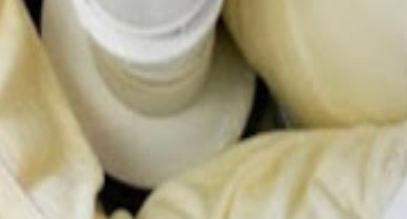Why You Should Wash Your Pillows
- Health Benefits : Removing dust mites, allergens, and bacteria improves air quality and reduces allergy symptoms.
- Longevity : Regular cleaning extends the life of your pillows by preventing stains and odors.
- Comfort : Clean pillows feel fresher, fluffier, and more inviting.
- Hygiene : Washing removes sweat, oils, and dead skin that build up over time.
- Peace of Mind : Knowing your pillows are clean promotes better sleep and relaxation.
How Often Should You Wash Your Pillows?
- Every 3–6 Months : Wash your pillows at least twice a year to maintain cleanliness.
- Pillow Protectors Help : Using a pillow protector can reduce the frequency of washing by acting as a barrier against dirt and oils.
Step-by-Step Guide to Washing Your Pillows
Step 1: Check the Care Label
- Always start by reading the care label on your pillow. Different materials (down, synthetic, foam, etc.) require specific washing instructions.
Step 2: Gather Supplies
- Mild Detergent : Use a gentle, hypoallergenic detergent to avoid damaging the fabric or filling.
- Washing Machine : A front-loading or large-capacity machine works best to accommodate bulky pillows.
- Tennis Balls or Wool Dryer Balls : These help fluff pillows during the drying process.
Step 3: Prep the Pillows
- Remove pillowcases and protectors. Wash these separately according to their care instructions.
- If your pillows are particularly dirty, spot-treat stains with a mixture of water and mild detergent.
Step 4: Load the Washing Machine
- For Down or Synthetic Pillows : Wash two pillows at a time to balance the load. This prevents the machine from becoming unbalanced.
- For Foam or Memory Foam Pillows : Hand-wash these in a bathtub instead of using a machine, as they can break apart in agitators.
Step 5: Add Detergent and Start the Cycle
- Use a small amount of mild detergent and select the gentle or delicate cycle with warm water. Avoid hot water, which can damage certain pillow materials.
Step 6: Rinse Thoroughly
- Run an extra rinse cycle to ensure all detergent is removed. Leftover soap can cause clumping or irritation.
Step 7: Dry the Pillows
- Machine Drying : Toss the pillows into the dryer with 2–3 clean tennis balls or wool dryer balls. Set the dryer to low heat and check periodically to prevent overheating.
- Air Drying : For foam or delicate pillows, lay them flat on a clean towel in a well-ventilated area. Flip occasionally to speed up drying.
Tips for Specific Pillow Types
Down or Feather Pillows
- Use a gentle cycle and dry thoroughly to prevent mold or mildew.
- Fluff by hand after drying to restore loft.
Synthetic Pillows
- These are durable and machine-washable but may require extra drying time.
- Shake vigorously after washing to redistribute the filling.
Foam or Memory Foam Pillows
- Hand-wash only, as machine washing can cause them to break apart.
- Squeeze out excess water gently—never wring or twist.
Buckwheat or Natural Fill Pillows
- Remove the outer cover and wash it separately. Spot-clean the inner buckwheat hulls if needed.
Why This Method Works
- Gentle Cleaning : Mild detergent and cool water protect the integrity of the pillow material.
- Thorough Drying : Proper drying prevents mold, mildew, and clumping.
- Fluffing Tools : Tennis balls or dryer balls help restore the pillow’s shape and loft.
Signs It’s Time to Replace Your Pillows
Even with regular washing, pillows don’t last forever. Replace them if:
- They no longer hold their shape or feel lumpy.
- You wake up with neck pain or allergies.
- They’re over 1–2 years old (for synthetic) or 2–3 years old (for down).
Final Thoughts
Washing your pillows properly is a simple yet impactful way to improve your sleep environment and overall hygiene. With this guide, you’ll be able to keep your pillows fresh, fluffy, and ready for dreamland.
Your Turn! Have you ever washed your pillows before, or do you have tips for keeping them clean? Share your thoughts below.

